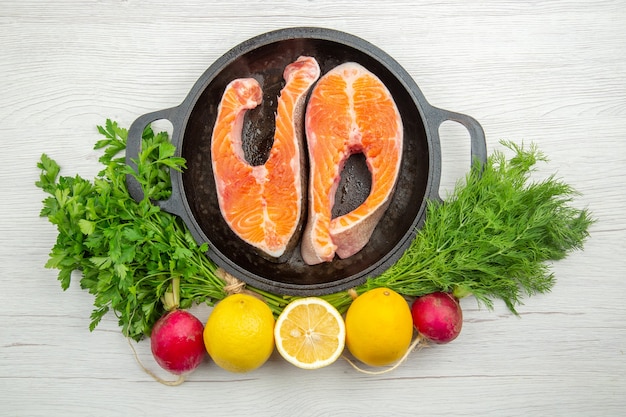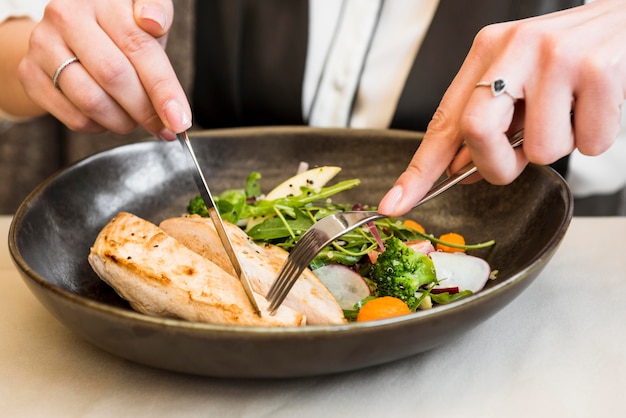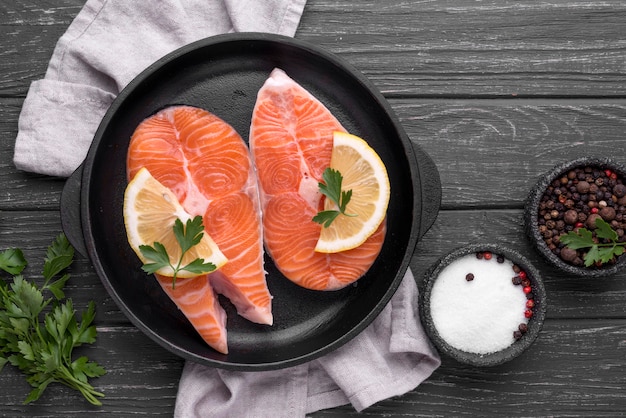You know that feeling: you're craving salmon, but the thought of getting the cooking time just right fills you with a touch of anxiety. You've got the pan sizzling, the oil shimmering, and the beautiful salmon fillet ready to go, but then that nagging doubt creeps in. Is it going to be dry and overcooked? Or will it be raw and undercooked? Believe me, I've been there. As a passionate home cook, I've spent my fair share of time wrestling with this very dilemma. It's a real head-scratcher, isn't it? Sometimes you nail it, and the results are divine. Other times, well, let's just say the results are a little less appetising.
But fear not, fellow salmon enthusiasts! I'm here to share my hard-earned wisdom and guide you to achieving that perfect pan-seared salmon – the kind that's tender, flaky, and bursting with flavour. Think juicy, succulent, and beautifully browned, with a melt-in-your-mouth texture. This is going to be a journey to unlock the secrets of perfect pan-seared salmon. We'll cover everything from choosing the right fillet to nailing the cooking time, with tips and tricks along the way to make your cooking experience a breeze. You'll be a salmon-searing pro in no time!
(Part 1) Understanding Salmon: A Deep Dive

Let's get the basics out of the way. Salmon is a fantastically versatile fish, with a rich flavour and beautiful pink hue. But, understanding the different types of salmon can make a world of difference in your cooking, influencing both the flavour and the cooking time.
The Salmon Family: A Guide to the Types
- atlantic salmon: The most common type of salmon you'll find in the UK. It's typically farmed, which often translates to a slightly milder flavour compared to its wild cousin. Atlantic salmon is generally a good choice for those looking for a less intense flavour and a more affordable option.
- Wild Atlantic Salmon: This salmon, as the name suggests, is caught in the wild, which gives it a richer flavour and a firmer texture than farmed Atlantic salmon. However, it tends to be more expensive due to the challenges of sustainable wild fishing.
- sockeye salmon: This salmon stands out for its vibrant deep red flesh and its rich, buttery flavour. It's a prized variety, known for its intense flavour profile, making it perfect for those who enjoy a more robust taste.
- King Salmon: Also known as chinook salmon, this is the largest of the pacific salmon species. It boasts a bold, robust flavour and a firmer texture. King salmon is truly a culinary treat, offering a rich and memorable eating experience.
- pink salmon: This salmon has a milder flavour than other types and is often used in canned products. It's a versatile option, good for everyday use and budget-friendly recipes.
Why the Type of Salmon Makes a Difference
The type of salmon you choose significantly impacts the cooking time. wild salmon generally takes a bit longer to cook than farmed salmon due to its denser flesh. Sockeye and King salmon, with their dense flesh, will also need a bit more time in the pan compared to Atlantic or pink salmon. Remember, the thickness of the fillet also plays a crucial role – thinner fillets cook faster than thicker ones.
(Part 2) The Tools of the Trade: Equipping Yourself for Success

You know what they say – a good workman never blames his tools. And this definitely applies to pan-searing salmon. The right tools can make all the difference in getting that perfect sear and juicy inside.
The Pan: Choosing the Right Weapon for the Job
The trusty cast iron skillet is my go-to pan for searing salmon. It gets incredibly hot and retains heat well, which is essential for getting that beautiful, crispy crust on the outside. The cast iron's ability to distribute heat evenly ensures that the salmon cooks consistently and avoids hot spots. If you don't have a cast iron skillet, a heavy-bottomed stainless steel pan will also work well. Just make sure it's large enough to accommodate your salmon fillet and that the sides are high enough to prevent the oil from splattering everywhere.
The Oil: Selecting the Right Fuel for Your Searing Fire
While olive oil is a classic choice, I've found that a high-heat oil, like avocado oil or grapeseed oil, works best for searing salmon. These oils can handle the high temperatures without smoking or burning, preserving the flavour of the salmon and avoiding any unpleasant, acrid taste.
The Spatula: Your Salmon's Gentle Guide
Choose a thin, sturdy spatula that can easily slide under the salmon without breaking it. I love a good metal spatula – it helps to ensure even heat distribution and prevents the salmon from sticking to the pan. A flexible spatula is also useful, allowing you to gently lift the salmon to check for doneness without disturbing the sear.
The Thermometer: Your Salmon's Secret Weapon
Don't underestimate the power of a trusty thermometer! It's an invaluable tool for ensuring that your salmon is cooked to perfection. A good instant-read thermometer will give you accurate readings in seconds, so you can avoid overcooking or undercooking your prized catch. It's the surefire way to take the guesswork out of cooking salmon to your preferred doneness.
(Part 3) Mastering the Art of Searing: A Step-by-Step Guide

Now that you've got the tools ready, it's time to dive into the art of searing. Think of searing as a dance between heat, time, and patience. It's a delicate process that requires a bit of finesse, but the results are well worth the effort.
Prepping Your Salmon: Setting the Stage for a Perfect Sear
Start by patting your salmon fillet dry with paper towels. This will help to ensure that the skin gets crispy and the salmon sears beautifully. Water interferes with the searing process, so removing excess moisture is crucial. If you're using skin-on salmon, score the skin with a sharp knife to help prevent it from curling up. This step allows for even cooking and a more attractive presentation.
Seasoning Your Salmon: Adding Layers of Flavor
Salt and pepper are the foundation of any good seasoning for salmon. They enhance the natural flavour of the fish without overpowering it. You can also get creative with your seasonings. Some of my favourites include:
- Lemon and Dill: The classic combination of lemon zest and fresh dill adds a bright, refreshing flavour. The lemon brightens the salmon, while dill adds a subtle, earthy note.
- Garlic and Herbs: A mix of minced garlic, chopped parsley, and oregano creates a fragrant and savoury seasoning. The garlic adds a pungent, earthy aroma, while the herbs provide a touch of herbaceous freshness.
- Smoked Paprika and Chili Flakes: This combination adds a smoky, spicy kick to your salmon. Smoked paprika imparts a rich, smoky flavour, while chili flakes add a subtle heat that complements the salmon beautifully.
- Ginger and Sesame: A touch of grated ginger and sesame seeds provides a unique and flavourful twist. The ginger adds a subtle, spicy kick, while the sesame seeds provide a nutty and slightly sweet note.
The Searing Process: Orchestrating the Dance of Heat and Time
Here's where the magic happens. Heat your pan over medium-high heat until it's scorching hot. This is crucial for achieving that beautiful, crispy crust. Add a thin layer of oil and swirl it around to coat the pan. Once the oil shimmers, carefully place the salmon fillet in the pan, skin-side down. The goal is to achieve a beautiful, golden-brown crust – this is what gives pan-seared salmon its distinctive flavour and texture. Don't move the salmon for at least 3-4 minutes, allowing it to sear undisturbed. This allows the skin to crisp up and the flesh to develop a flavorful crust.
After those crucial 3-4 minutes, gently flip the salmon over and cook for another 2-3 minutes, or until the flesh is cooked through. You can tell if it's done by gently pressing on the thickest part of the fillet. If it flakes easily, it's ready.
(Part 4) The Importance of Resting: A Crucial Step for Juicy, delicious salmon
It may seem counterintuitive, but allowing the salmon to rest after searing is crucial. This allows the juices to redistribute evenly, resulting in a more tender and flavorful salmon. It's a simple step that makes a big difference in the final outcome.
Resting Time: Letting the Salmon Relax and Rejuvenate
Rest your salmon for at least 5 minutes before serving. You can transfer it to a plate or a cutting board and cover it loosely with foil. This allows the fish to rest and retain its moisture, creating a more succulent and delicious end result. The juices will redistribute throughout the fillet, resulting in a more even and flavorful experience.
(Part 5) Cooking Time: The Golden Rule for perfectly cooked salmon
We've arrived at the heart of this guide: cooking time. As you've probably gathered, cooking time depends on several factors – the type of salmon, the thickness of the fillet, and your desired level of doneness. But, with a little guidance, you can master the art of cooking salmon to perfection.
General Cooking Times: A Starting Point for Your Salmon Journey
Here's a table that provides a general guide to cooking times for pan-seared salmon. Keep in mind that these are just guidelines, and the actual cooking time may vary slightly depending on your pan, stove, and the specific salmon you are using. It's always best to check the doneness with a thermometer for accuracy.
| Thickness (inches) | Farmed Salmon (minutes) | Wild Salmon (minutes) | Sockeye/King Salmon (minutes) |
|---|---|---|---|
| 0.5 - 0.75 | 3-4 | 4-5 | 5-6 |
| 0.75 - 1.0 | 4-5 | 5-6 | 6-7 |
| 1.0 - 1.25 | 5-6 | 6-7 | 7-8 |
| 1.25 - 1.5 | 6-7 | 7-8 | 8-9 |
Cooking to Your Preferred Doneness: Understanding the Salmon Spectrum
Here's how to determine the doneness of your salmon:
- Rare: The flesh is translucent and a little pink in the center. It's still very tender and delicate, with a moist and juicy texture.
- Medium-Rare: The flesh is slightly opaque, with a little pinkness remaining in the center. It offers a balance of tenderness and firmness, with a slightly cooked texture.
- Medium: The flesh is mostly opaque, with a slightly pink center. It's a more cooked texture, but still moist and tender.
- Well-Done: The flesh is completely opaque, with no pinkness remaining. It's a firm, cooked texture, suitable for those who prefer a more cooked fish.
Remember, these are just general guidelines. The best way to ensure perfect doneness is to use an instant-read thermometer. Aim for an internal temperature of 125°F (52°C) for medium-rare, 130°F (54°C) for medium, and 140°F (60°C) for well-done.
(Part 6) Tips and Tricks: Elevating Your Salmon-Searing Game
Let's sprinkle in some tips and tricks to take your pan-searing game to the next level. These are tried-and-true techniques that will help you achieve perfect results every time.
How to Avoid Sticking: Preventing Salmon from Becoming a Prisoner of the Pan
Salmon can be a bit prone to sticking to the pan. To avoid this, make sure the pan is hot enough before adding the salmon. A hot pan will sear the salmon quickly, preventing it from sticking. Also, don't overcrowd the pan – give each fillet enough space to sear properly. If you're using a nonstick pan, you may not need to add oil, but it's still a good idea to use a small amount to prevent sticking.
Searing the Skin: Creating a Crispy, Delicious Armor
To achieve a crispy skin, make sure the skin is dry before searing. Pat it dry with paper towels and score the skin with a sharp knife to prevent curling. You can also try flipping the salmon skin-side down for the last few minutes of cooking. This helps to crisp up the skin while ensuring the flesh doesn't overcook.
Adding Flavour: Building a Symphony of Taste
Don't be afraid to get creative with your seasonings. A simple squeeze of lemon juice, a sprinkle of fresh herbs, or a touch of chili flakes can add a burst of flavour. You can also add aromatics to the pan, like garlic or shallots, for extra flavour. Adding aromatics at the beginning of the searing process allows their flavours to infuse the oil, enhancing the overall taste of the salmon.
Glazing Your Salmon: Adding a Touch of Shimmering Indulgence
For an extra touch of indulgence, consider glazing your salmon with a simple sauce. You can use a mixture of honey and soy sauce, or a balsamic glaze. Add the glaze during the last minute of cooking, allowing it to caramelize and create a beautiful, shiny finish. The glaze will add a touch of sweetness and complexity, elevating the dish to new heights.
(Part 7) Serving Up Your Pan-Seared Salmon: The Grand Finale
You've done it! Your perfectly pan-seared salmon is ready to be enjoyed. Now, it's time to create a beautiful and flavorful presentation.
Sides to Accompany Your Salmon: A Culinary Symphony
Here are some delicious sides that pair beautifully with pan-seared salmon:
- Roasted Vegetables: Asparagus, broccoli, Brussels sprouts, and sweet potatoes are all great options. Roasted vegetables provide a delicious contrast in texture and flavour, complementing the salmon perfectly.
- Green Salad: A simple green salad with a light vinaigrette adds freshness and balance. The crispness and acidity of the salad cut through the richness of the salmon, creating a refreshing and satisfying combination.
- Risotto: A creamy risotto with lemon and herbs is a comforting and elegant accompaniment. The creamy texture of the risotto and the bright flavours of lemon and herbs create a sophisticated and satisfying dish.
- Couscous: Fluffy couscous with lemon and herbs complements the salmon beautifully. The light and fluffy texture of couscous provides a delicious counterpoint to the rich and delicate flavour of the salmon.
Presenting Your Salmon: A Feast for the Eyes
To make your salmon look even more appealing, consider serving it with a simple garnish, such as a sprig of dill, a wedge of lemon, or a few toasted sesame seeds. You can also present it on a bed of arugula, which adds a touch of peppery flavour. The right garnish adds a touch of visual appeal and elevates the overall presentation of the dish.
(Part 8) FAQs: Answers to Your Most Burning Salmon Questions
You've got questions, I've got answers. Here are some frequently asked questions about pan-searing salmon, along with detailed answers to guide you on your salmon-searing journey.
1. Can I use frozen salmon for pan-searing?
Yes, you can use frozen salmon for pan-searing. Just make sure to thaw it completely before cooking. The best way to thaw salmon is in the refrigerator overnight. Allow ample time for thawing, as partially frozen salmon will not cook evenly.
2. What if my salmon sticks to the pan?
If your salmon sticks to the pan, it's likely that the pan wasn't hot enough or that you didn't pat the fillet dry. If this happens, carefully use a spatula to loosen the salmon and try to flip it over. You can also try adding a bit more oil to the pan. However, if the pan is already hot, adding more oil may lead to smoking.
3. Can I cook salmon in the oven after searing it?
Yes, you can finish cooking your salmon in the oven after searing. This is a great way to ensure that the salmon is cooked through without overcooking it. Preheat your oven to 350°F (175°C) and place the seared salmon on a baking sheet. Bake for 5-7 minutes, or until the fish is cooked through. This technique allows you to get a beautiful sear on the outside while ensuring the salmon is cooked to your desired level of doneness.
4. What can I do with leftover salmon?
Leftover salmon is a great addition to salads, sandwiches, and pasta dishes. You can also use it in a salmon dip or a quiche. The possibilities are endless!
5. What are some other ways to cook salmon?
Besides pan-searing, salmon can be baked, grilled, roasted, or poached. Each method offers a different flavour and texture. Experiment and find your favourite way to cook salmon!
And there you have it – your ultimate guide to achieving perfect pan-seared salmon. Armed with this knowledge, you'll be able to impress your friends and family with a delicious and impressive dish. So go forth, unleash your inner chef, and enjoy that succulent salmon!
Everyone is watching

Perfect Rice Every Time: The Ultimate Guide to Cooking Rice
Cooking TipsAs a self-proclaimed foodie, I've always been a bit obsessed with rice. It's the foundation of countless cuisi...

Prime Rib Roast Cooking Time Chart: Per Pound Guide
Cooking TipsPrime rib roast. Just the name conjures images of lavish dinners, crackling fires, and hearty laughter. It’s ...

The Ultimate Guide to Cooking Asparagus: Tips, Techniques, and Recipes
Cooking TipsAsparagus. The mere mention of this spring delicacy conjures up images of vibrant green spears, crisp and burs...

Ultimate Guide to Cooking the Perfect Thanksgiving Turkey
Cooking TipsThanksgiving. Just the word conjures up images of overflowing tables laden with delicious food, the scent of r...

How Long to Bake Potatoes in the Oven (Perfect Every Time)
Cooking TipsBaked potatoes are a staple in my kitchen. They're incredibly versatile, delicious, and surprisingly easy to m...
